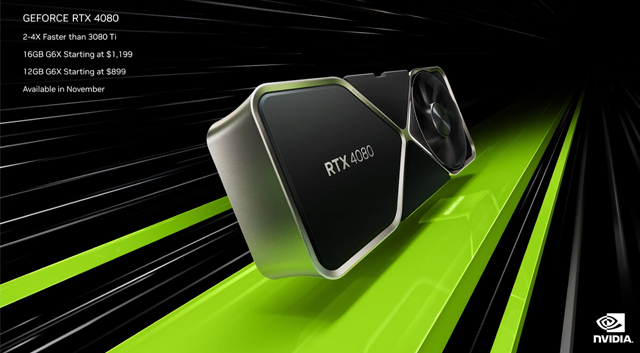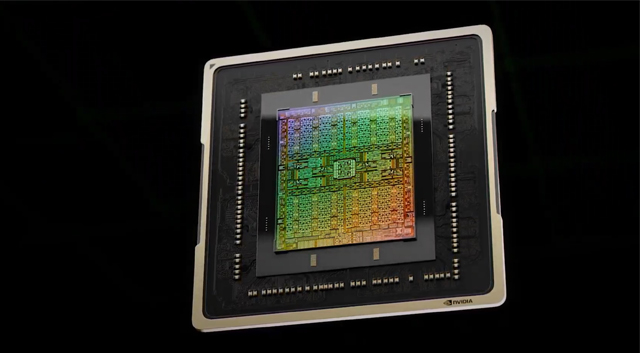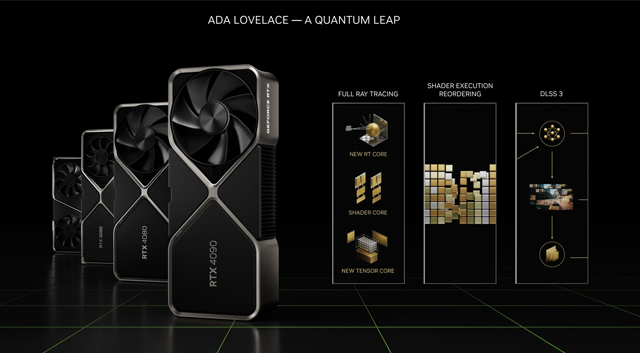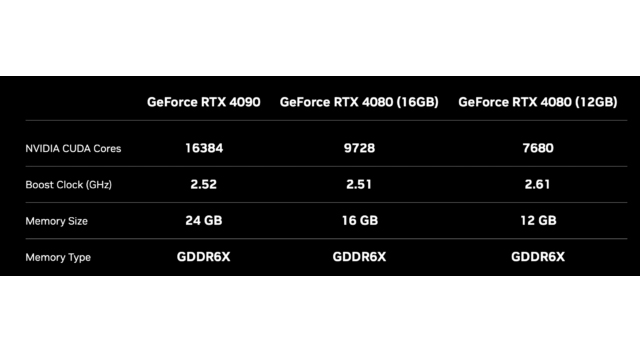Back to all articles
EVERYTHING You Need to Know About Nvidia's New Ada Lovelace 4000 Series GPUs
Published: 9-28-2022
Nvidia has officially unveiled the 40-series Ada Lovelace cards, and there is much information (and misinformation) to process. We've summarized the essential facts you need when choosing your next GPU if you want to know what these cards bring and whether you should buy one once they start shipping.

here Are Three Cards (For Now)
Nvidia announced three GPU:
RTX 4090 24GB at $1599
RTX 4080 16GB at $1199
RTX 4080 12GB at $899
The 4090 will release on 12 October 2022, and the 4080s will ship in November. There was no mention of a 4070, 4060, or 4050 GPU, and 30-series GPUs will remain on sale and in production for the time being.
Spoiler: The Cards Are Fast
Weíll cover the fancy architectural improvements shortly, but Lovelace comes with both a significant IPC (instructions per clock) improvement and a huge leap in clock speeds. While the boost clock of the 3090 Ti tops out at just under 1.9Ghz, the 4090 goes all the way to 2.85Ghz! All while drawing less than the 3090 Ti
The 4090 Is Not The Full Lovelace GPU
The AD102 GPU die used in the RTX 4090 is supposed to have 18,432 CUDA cores, but the 4090 only offers 16,384 CUDA cores. We presume that a 4090 Ti (if Nvidia goes with that name) would represent the full-fat Lovelace core. Presumably, yields on Lovelace are not yet good enough to make that card profitable, but thatís pretty normal at the start of production on a new process.
The 4080s Are on Different GPU Dies

In the past, 80-series cards have been cut-down versions of the entire top-spec core, but thatís not the case with Lovelace. Instead, all three cards are on different GPU dies.
Most importantly, the 4080 16GB and 4080 12GB cards are entirely different GPUs. Looking at the marketing and the product names, itís easy to assume that the only difference is VRAM, but that wouldnít explain the $300 MRSP difference.
his has led some people to frame the 12GB 4080 as a re-branded (and marked-up) 4070. Whether thatís true or not, itís crucial to know that youíre giving up far more than some VRAM if you opt for the cheaper 4080 model.
Lovelace Offers Significant Architectural Improvements
Lovelace represents a considerable amount of under-the-hood improvements. The headline improvement is the introduction of out-of-order processing to Lovelace, which is a first for GPUs. When this feature was introduced to CPUs years ago, it led to a quantum leap in performance and efficiency, unlocking massive potential for GPUs now and in the future.

In particular, it solves a significant inefficiency in real-time ray tracing, which benefits from out-of-order processing. Combined with a new generation of RT and ML cores, it seems that Lovelace offers a worthwhile upgrade over Ampere regarding RT performance. To showcase this, Nvidia showed off a new version of the Cyberpunk 2077 game that only uses RT lighting (effectively path-traced) running at playable framerates.
DLSS 3 Is Semi-backwards Compatible
Nvidia communicated the details of DLSS 3 rather poorly, creating the impression that 20- and 30- series cards would be locked out of DLSS 3 games. Thankfully, it turns out that this isnít true at all.
The headline feature of DLSS 3 is frame interpolation. In essence, this is the same concept as motion smoothing on a TV, which is something no one likes for video games because it adds a heap of input lag.
However, thanks to an optical flow analyzer three times as fast as previous cards, Lovelace can interpolate frames without adding much latency. DLSS 3 also always incorporates Nvidia Reflex, reducing latency in other parts of the render pipeline. This means you can have significantly better motion clarity, even if latency is no better than the ďnativeĒ framerate of the content.
Since older RTX cards lack the faster hardware needed to interpolate fast enough at acceptable quality levels, they wonít benefit from this aspect of DLSS 3. However, every DLSS 3 game still offers DLSS 2 upscaling and Nvidia Reflex. Any game thatís DLSS 3 ready is therefore DLSS 2 ready as well. In other words, if you donít care about the frame interpolation feature, youíre still getting all the other benefits of DLSS 3.
Wait for AMDís RDNA 3 Announcement
While the 40-series cards give us plenty of reasons to be excited, they donít offer any compelling reasons to buy one right away. With AMD gearing up to announce its new RDNA 3 architecture, itís worth waiting to see what cards the rival company is holding before committing to anything new.
While RDNA 2 falls short in terms of Machine Learning and Ray Tracing features, for users looking for pure raster graphics performance, there was plenty of like about RDNA 2, especially from a budget perspective.

If RDNA 3 cards offer a big enough leap in technical features and raw performance, the choice may not be as clear-cut for PC users as it may have been with RDNA 2 and Ampere GPUs. Perhaps most importantly, depending on what AMDís product stack looks like, Nvidia may have to rethink its pricing strategy to remain competitive.
We also shouldnít forget about the 30-series cards, which remain on sale and have undergone massive price drops, especially at the high-end. If you donít care about the new RT and ML features, thereís a lot of value left in Ampere, but even then, itís worth waiting for RDNA 3 to see how that affects prices for both Ampere and Lovelace products.